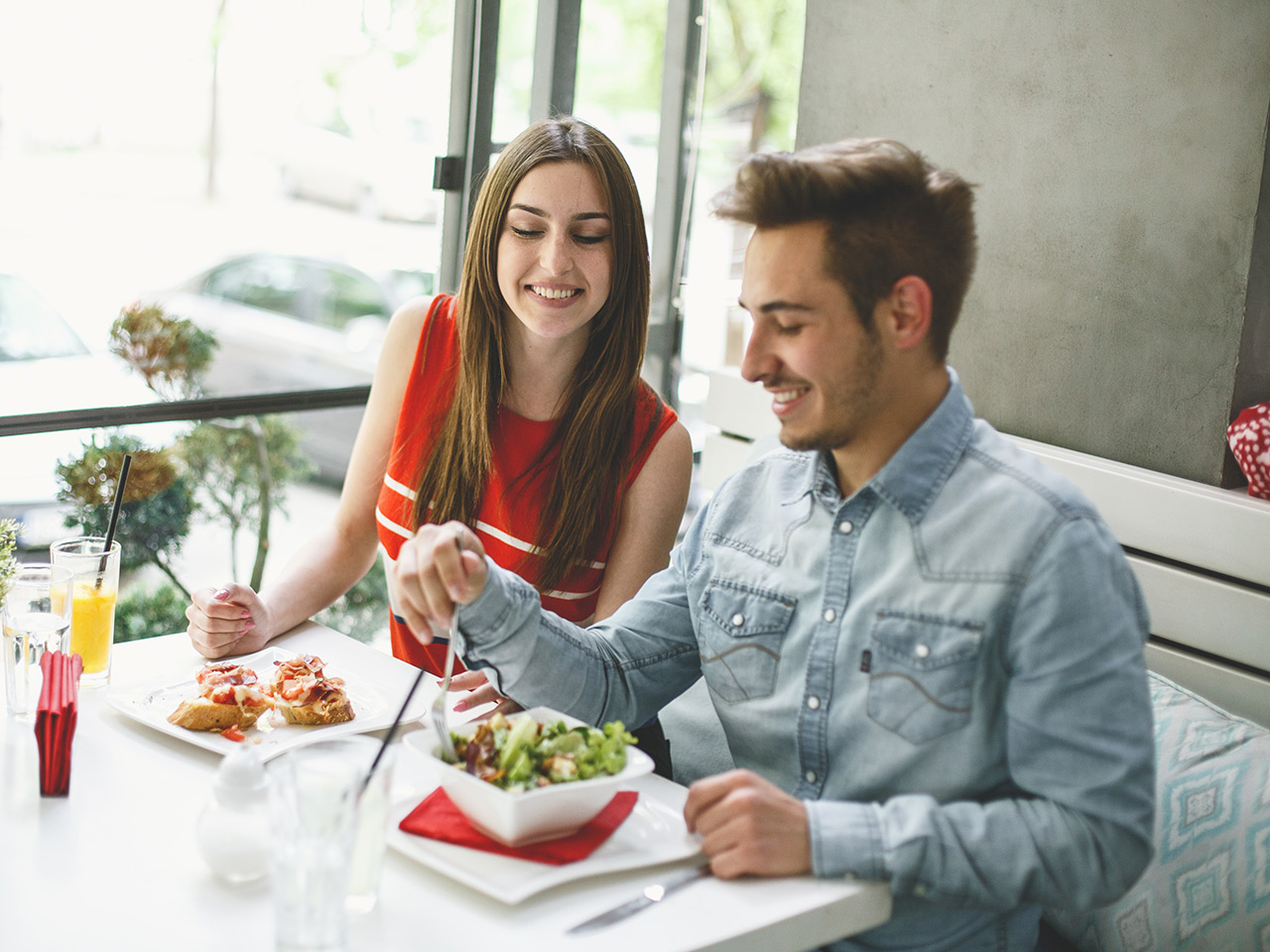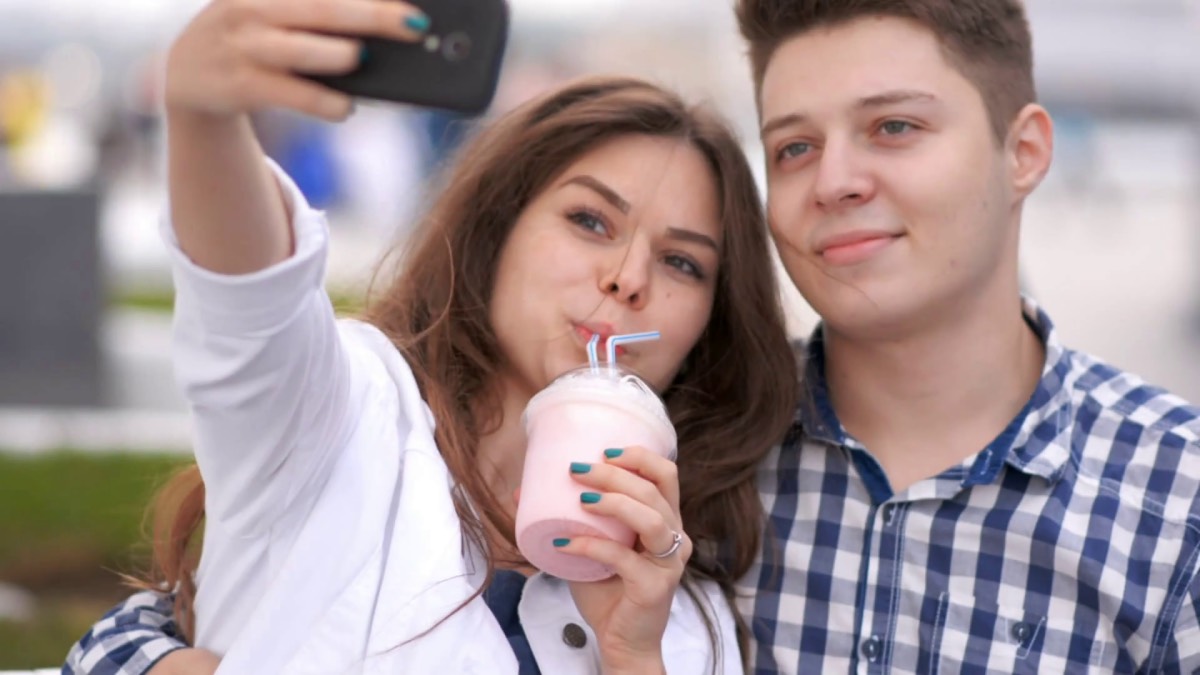Twenty eight per cent of women and 48 per cent of men claim they fell in love at first sight, according to a recent study of over 80,000 people in the US.
Which means 72 per cent of women and 52 per cent of men fell gradually – and were open to being ‘persuaded’.
Sadly, there still isn’t a magic potion that will make anyone fall in love with you (though alcohol clearly helps!) But science has quite a few suggestions.
The following techniques work at the beginning of relationships – when you’ve first met or started dating – rather than to ignite flames that have long flickered out.
And while – quite obviously – none of them can forcesomeone to fall in love with you against their will, they can nudge the odds a lot higher in your favour. Worth a try, right?
1. BE EASY TO GET
The more you interact with someone, the more they’ll like you, says David Lieberman, a US expert in human behaviour.
Several reputable studies show repeated exposure to practically any stimulus makes us like it more (the only time it doesn’t hold true is if our initial reaction to it is negative).
So forget about being all aloof, evasive and unavailable when you first meet someone you fancy: they’ll just write you off as arrogant and cold and that will be that (unless of course you’re Victoria’s-Secret-good-looking and can get away with anything).
Instead, find loads of excuses to spend time with them until you’re convinced you’ve won them over…then start being a little less available.
2. …THEN HARD TO GET
Once you’re satisfied they think you’re nice, now start seeing them a little less and less – until they hardly see you at all.
This is the Scarcity Principle (a term coined by researcher Robert Cialdini): people value and desire something more when it’s rare or difficult to obtain.
It’s obvious really: if piles of diamonds suddenly appeared all over the pavement, we’d no longer covet them.
The Scarcity Principle is why ‘only one left’ marketing ploys make us stop and consider buying something we don’t even really want. We’re the same with people.
You may have heard of the ‘closing time experiment’. Researchers wanted to test the old adage that everyone looks a lot more attractive just as the bar or club is about to close.
Some of this is due to alcohol: the more we drink, the more attractive others appear to be.
Which is why the researchers took blood alcohol readings of participants – and found they had little effect on what happened.
Even participants who weren’t getting progressively more drunk as the night progressed, found others more attractive as closing time approached simply because time was limited and there were less people in the bar to choose from.

3. DON’T DO NICE THINGS FOR THEM, LET THEM DO NICE THINGS FOR YOU
If you do something nice for someone, it makes you feel good on two levels.
You feel pleased with yourself (‘Aren’t I a nice person for making them feel special!’) and extra-warm towards the person you’ve just spoilt.
To justify the effort or expense, we often over idealise how wonderful they are to deserve it. End result: we like the person more.
When someone does something nice for us, we’re pleased. But there are a whole lot of other emotions that come into play – and they’re not all good.
Sometimes we feel overwhelmed – there’s pressure to live up to being the wonderful person who inspired such a gift/ act, not to mention pressure to return the favour.
It’s all even trickier if the ‘nice thing’ comes from someone you quite fancy but aren’t sure about yet.
When we’re infatuated with someone, we’re desperate to do nice things for them.
Truth is, you’re much better off asking them to do you a favour or letting them spoil you.

4. GIVE THEM THE EYE
You can thank Harvard psychologist Zick Rubin for this one.
Rubin set out to see if you could measure love scientifically and achieved it by recording the amount of time lovers spent staring at each other.
He discovered couples who are deeply in love, look at each other 75 per cent of the time when talking and are slower to look away when someone else dares to intrude.
In normal conversation, people look at each other between 30 and 60 per cent of the time.
The significance of what’s now known as Rubin’s Scale is obvious: it’s possible to tell how ‘in love’ people are by measuring the amount of time they spend gazing adoringly.
Some psychologists still use it during counselling to work out how much affection couples feel for each other.
It’s also happens to be remarkably handy information if you want to make someone fall in love with you.
If you look at someone you fancy 75 per cent of the time when they’re talking to you, you trick their brain. The brain knows the last time someone looked at them that long and often, it meant they were in love.
So it thinks, OK, they’re obviously in love with this person as well, and starts to release phenylethylamine (PEA).
PEA is the chemical cousin to amphetamines and it’s secreted by the nervous system when we first fall in love. It is what makes your palms sweat, your tummy flip over and your heart race.
The more PEA the person you fancy has pumping through their bloodstream, the more likely they are to fall in love with you.
While you can’t honestly force someone to adore you if they’re not remotely interested, (they won’t let you look into their eyes for that long, for a start!) it is entirely possible to kick-start the production of PEA using this technique.
Give someone the sensation of feeling in love whenever they’re with you and it’s not such a huge leap of logic for them to finally decide they are!

5. PRACTISE PUPILLOMETRICS
We all know ‘bedroom eyes’ when we see them: it’s the look of lust. There’s just one thing you need to get bedroom eyes: big pupils. According to pupillometrics, the science of pupil study, this is the crucial element we respond to.
You can’t consciously control your pupils (one reason why people say the eyes don’t lie) but you can create the right conditions to inspire large pupils and get the effect.
First, reduce light. Our pupils expand when they’re robbed of it, one reason why candlelight and dimmer switches are de rigueur in romantic restaurants.
It’s not just the softening of light which makes our faces appear more attractive, larger pupils also help.
Scientists showed two sets of pictures of a woman’s face to men. The photograph was identical, except for one thing: the pupils in one set had been doctored to make them larger.
Read full article at Daily Mail.







